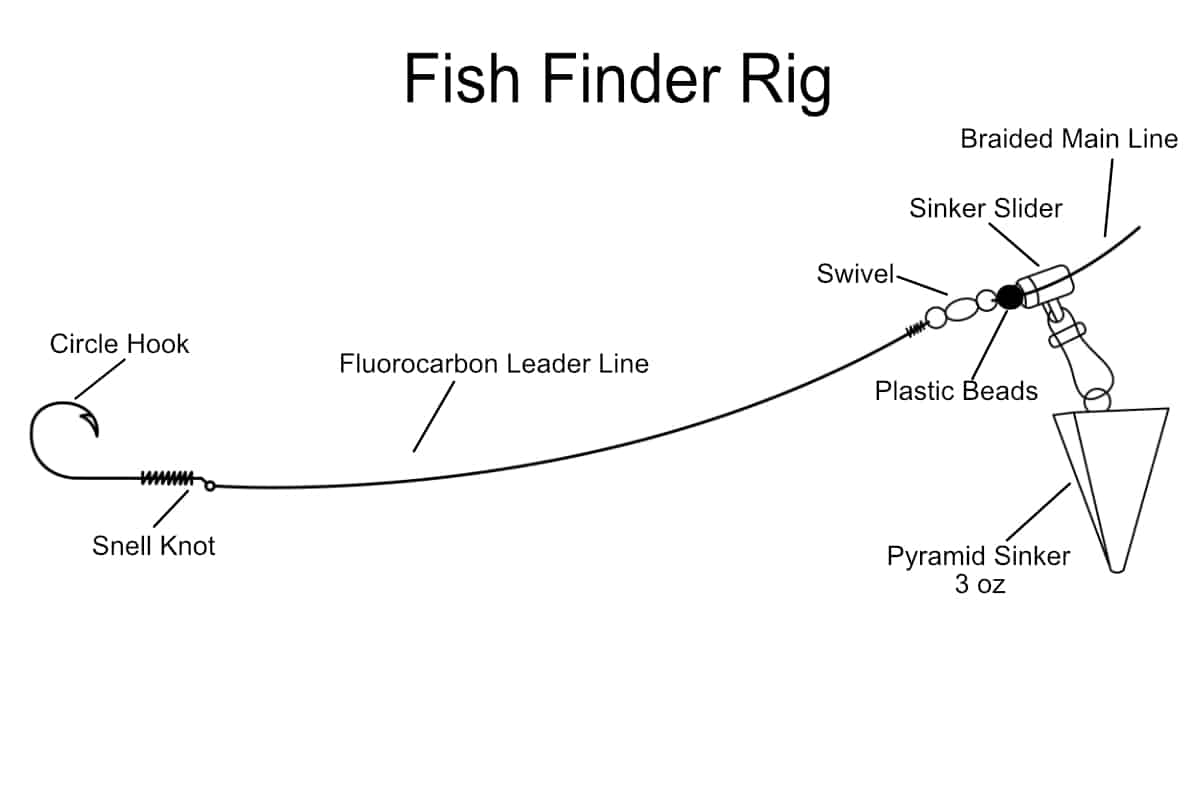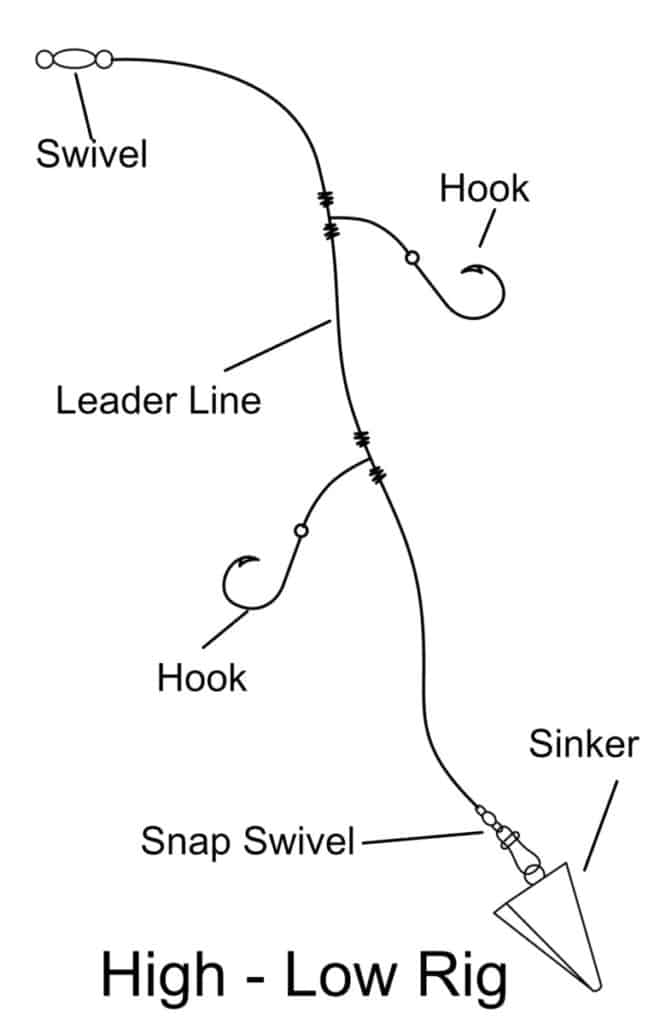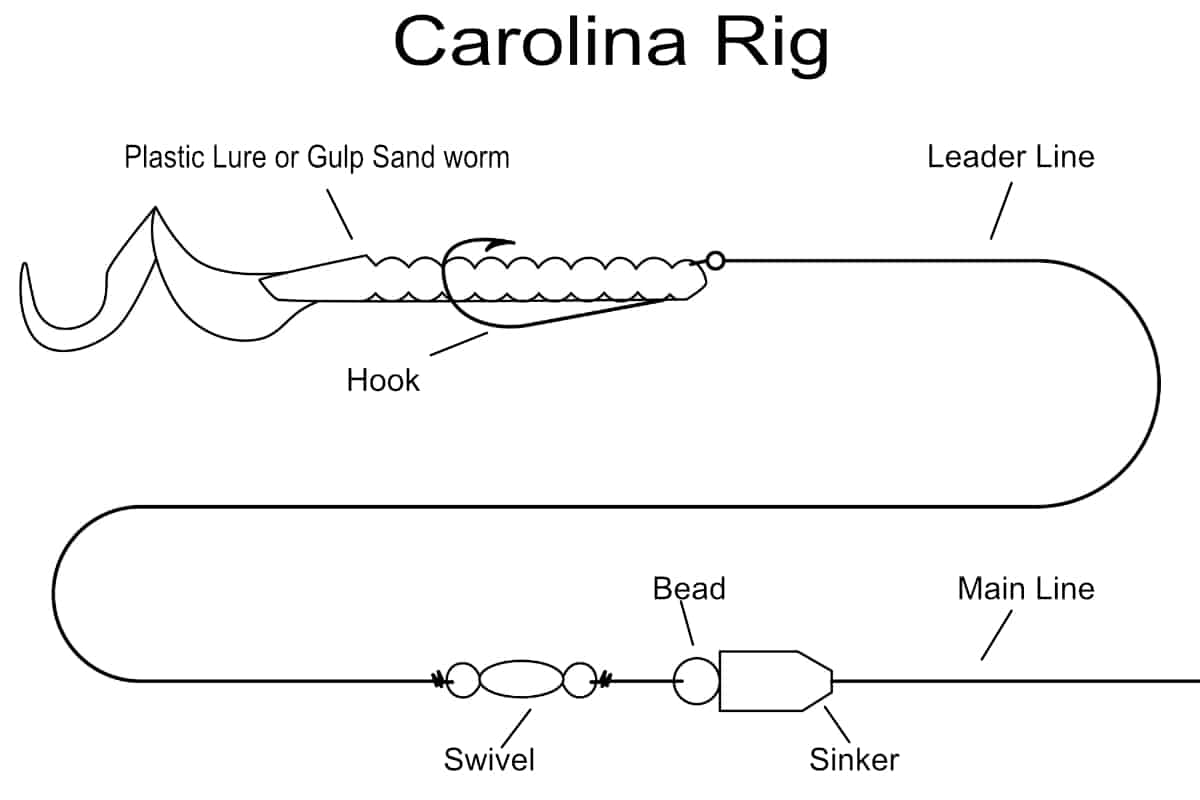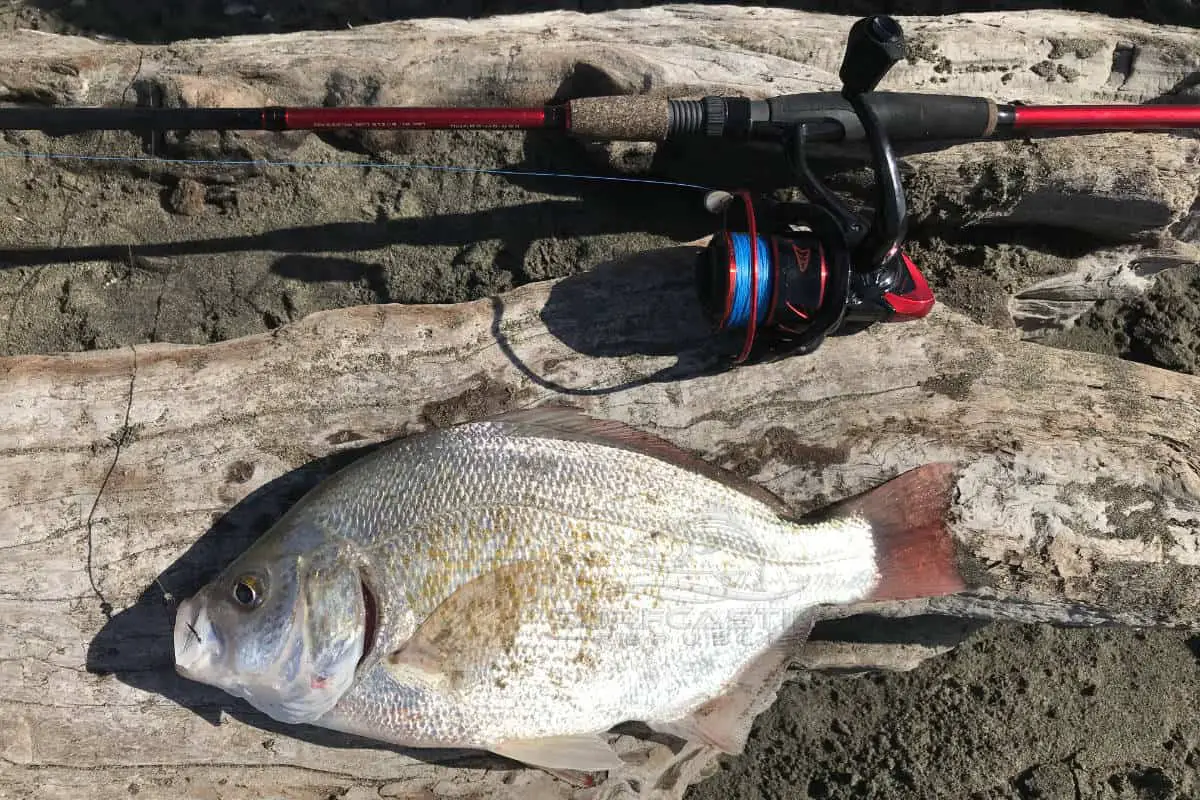Even beginners know that surfcasting and surf fishing happens only in saltwater and without a boat. Surf fishing generally occurs from sandy shore, rocks, and piers.
As far as equipment goes, you don’t ever need to worry about a boat, but if you’re just starting out, you’ll need to know what the best three surf fishing rigs for beginners are?
Lots of surfcasting rig options depend on the species you’re chasing, the water you’re fishing and all sorts of factors. Some rigs even have more than one name. For beginner surf casters, there are three top options: The Fish Finder Rig, the Hi-Low Rig, and the Carolina Rig.
What makes the Fish Finder, Hi-Low Rig, and Carolina Rigs ideal for beginners. Each offers different advantages, from simplicity to doubling-of-odds.
Having said that, each has advantages and disadvantages, and there are different set-ups and tweaks for particular species and circumstances. Here’s what beginners need to know.
What are the Three Best Surf Fishing Rigs for Beginners?
1. Fish Finder Rig
For beginners, simple may be best. A fish finder rig is made up of a leader with a hook and barrel swivel connected to the mainline placed behind a fish-finding weight slide.

On this rig, the bait line slides along the mainline, which lets your live bait swim freely through the water. This is a significant advantage when fishing for fish that want to take the bait a long way before swallowing the hook.
Fishfinder rigs are especially well-suited to showing bait naturally across the sandy bottoms offshore. An angler using a fish finder rig can present large chunks of bait because you’ll be able to “drop back” and give a biting fish some time to ingest it.
Adjusting the Fish Finder Rig for Particular Fish
A Fish Finder Rig is suitable for a wide range of surfcasting fish, including everything from fluke to brown sharks. Having said that, you should adjust the style and size of your hooks and leaders, depending on the fish you’re chasing.
As a general rule about leader length, the longer your lead, the more resistance you’ll feel from the wind, and the shorter your maximum cast length will be.
Fluke
Since fluke regularly lay in the breakers, casting distance is less of a concern. If you’re chasing fluke, use a long leader — 30″ for example — and just let the bait flutter at its end.
Striped Bass
How long a lead should you use for striped bass? That depends on where you’re fishing. If you need to cast a long way to get to the fish, use a short lead — even as short as 6″ — to maximize your cast considering wind resistance from the lead length.
If the bass you’re chasing are closer to shore, you can lengthen your lead because the wind resistance/cast distance trade-off isn’t as big a concern. In that case, use a 24″ to 30″ lead.
As you get more experienced, you’ll adjust your lead length not just to the fish you’re targeting but also to the bait you’re presenting. What are you going for? You want the most natural look possible for the bait, from the perspective of the fish. Lead length can be a factor in that.
Bluefish and sharks
When fishing for bluefish and especially sharks, the issue with your leads isn’t length so much as it is material. Bluefish and, especially, sharks will bite off your leads.
You can reduce the risk of that by using wire leaders. With sharks, bite offs aren’t the only issue. Wire or long, heavy-duty monofilament leaders will protect from snap offs due to abrasion against the rough skin of the shark.
2. Hi-Low Rig
When you’re starting out, why not double your odds? A Hi-Low Rig is sometimes called a “double dropper loop rig.” The “double” and the “hi” and “low” all refer to the fact that you have twice as many baits on your line. A Hi-Low Rig sets you up with two baited hooks on the same set-up.

How is a Hi-Low Rig Set Up?
Attach a weight to the end of your leader, then tie two dropper loops in the leader. You’ll want to leave at least a foot of space between the two dropper loops.
Once that’s done, attach a barrel swivel to the top of each leader and connect a hook to each loop. Once the whole rig is set up, attach it to your mainline.
The advantage of a Hi-Low Rig is obvious: Two hooked baits are being presented.
On the downside, movement of the bait is restricted more than other set-ups because the lines and weight are fixed.
There are a couple of key differences between a Fish Finder Rig and a Hi-Low Rig. First, in a Fish Finder Rig, the weight is above the hook. A Hi-Low Rig puts the hooks above the weight.
Second, if you’re using a Fish Finder Rig, you can feed your curious fish some line and not be concerned about the fish noticing the weight on the line.
The fixed weight on a Hi-Low Rig changes that. With a Hi-Low Rig, anglers need to set the hook quickly on a fish working on the bait. Why? The fish will quickly notice the unusual tension on the bait because of that weight attached to the end of it.
Once that happens, you risk that fish dropping the bait in a hurry. You can plan around this problem a little bit by using bait like clams, worms, or other small and soft options.
What sort of hooks should you use?
The short answer is that it depends on what fish you’re after. Assuming you’re chasing striped bass, scup, or small bluefish, Hi-Low Rig set-ups are ideal for all of these. Here are some hook suggestions.
For the striped bass, use octopus-type hooks with worms and claims. Use tiny Aberdeen hooks for offering works to scup. You can reduce the risk of tangling by opting against hooks with down-turned eyes; opt for straight-shanked hooks (onthewater ).
).
What Essential Fishing Tools Should I Have in My Rig Set Up?
When setting up your fishing rig, having the best multitool for fishing is essential. It can help you with various tasks such as cutting, tightening knots, and removing hooks. Other important tools to have in your rig setup include pliers, line clippers, and a tackle box with extra hooks and sinkers.
3. Carolina Rig
The third great surfcasting rig option for a surfcasting newbie is the Carolina Rig. You’ll sometimes hear it referred to as the C-Rig, and will also hear that it was originally intended for bass fishing in freshwater.

Even so, it’s proven to work well for surfcasting. It’s a set-up ideal for yellowfin, croaker, corbina, perch, and surf fish generally. The Carolina Rig is a good option year-round.
What makes a Carolina Rig a good option for beginners?
It’s easy to set up. It’s good at drawing fish and attracting bites. And it’s suitable for all weather and surf.
What makes the Carolina Rig the Carolina Rig is the separation between the sinker and the bait. Separating those two components gives a natural presentation to the bait.
A Carolina Rig’s set-up is built from five components:
Egg or bullet sinker; glass or plastic bead; barrel swivel; leader; and hook. Building the Carolina Rig is just a matter of threading the weight and bead on to your mainline.
Then, attach a barrel swivel to that mainline with a Paloma knot. Then add a leader to that swivel using another Palomar knot and attach a hook to the end of that leader.
If you want more information about the components, here are some details and options.
Sinker
How much weight should you use? Whatever you need to keep your bait stable in whatever surf conditions you’re fishing. For most surf conditions, a three to four-ounce sinker works, but you can adjust to wind and current.
Both bullet and egg-shaped sinkers work, though bullet sinkers are more common on the Carolina Rig. Lead and tungsten sinkers work, but tungsten sinkers are more expensive than lead.
Leader
When thinking about your leader, consider material and — more importantly — length. Accessible leader materials on Carolina Rigs are monofilament and fluorocarbon leaders between 15 and 20-lb test.
How long should your leader be? You’re looking for a happy medium between covering a good surface and floating to shallowly.
The most appropriate lead length will depend on your tide conditions, surf depth, current, and the fish you’re hunting.
For Carolina Rigs, the range to consider for your leader length is between 12 and 36 inches.
Hooks
Choose the size of your hook with reference to your bait, not your hoped-for fish. If your hook is the wrong size, you may lose your lure in flight while casting or quickly to the fish even if it does hit the surf.
One of the downsides of a Carolina Rig can be that detecting bites can be a little bit harder. Hooking the catch is easier by using circle-shaped hooks, so the fish are more likely to hook themselves upon biting.
Beads and Swivel
These two have an important rule on your rig. The beads protect your knot from the sinker that tied up on the swivel. You don’t want to lose your catch due to a damaged line.
The rule of the swivel is to prevent the line from twisting. These two sometimes were overlooked; you always want to protect your line to ensure you can bring that fish on the shore.
Summary
These three rigs are the best for beginners. I would recommend starting with the fish finder rig. Then learn how to surf fish with the high- low rig and Carolina rig as you go.
Any of these rigs can catch any fish that you are targeting. Make sure to have all the recommended materials, so you don’t lose your fish. Now go out and catch some fish. Have Fun and Good Luck!

